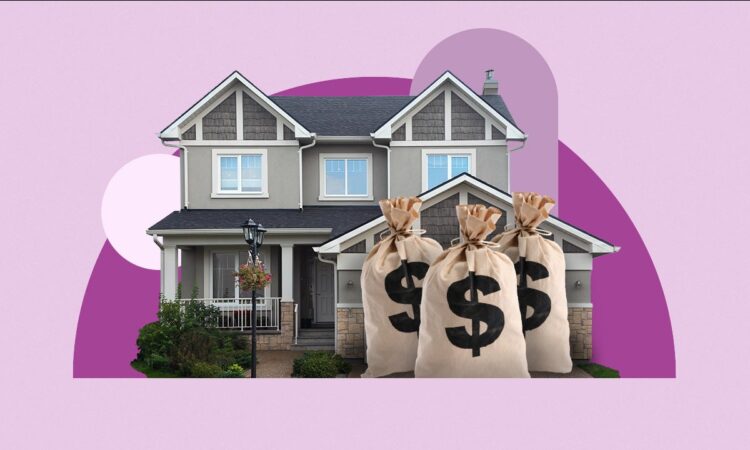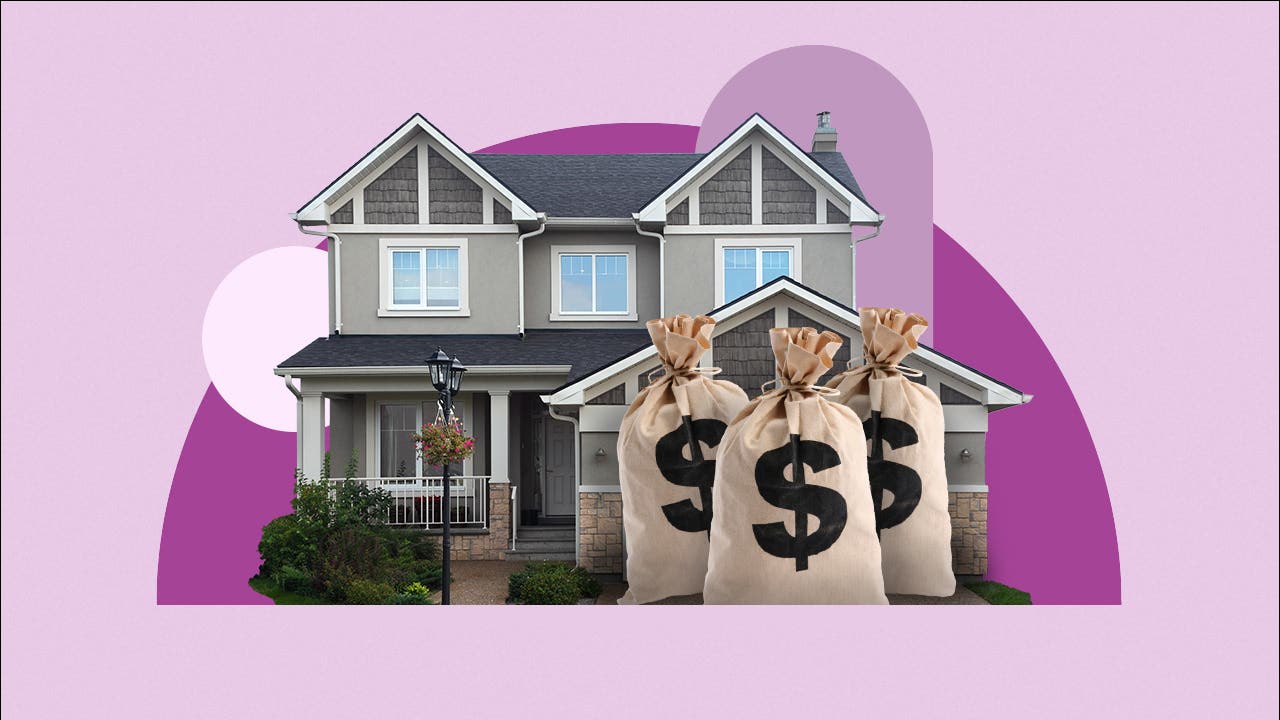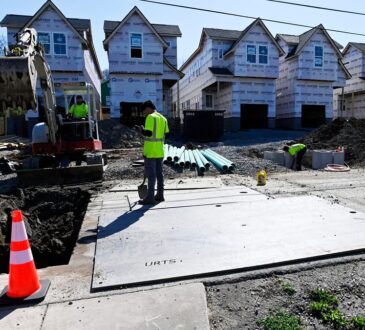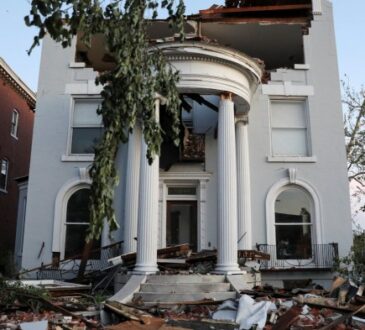

Images by Getty Images; Illustration by Issiah Davis/Bankrate
Key takeaways
- You don’t need to put 20 percent down to get a mortgage — some mortgages don’t even require a down payment.
- You can get a conventional mortgage with 3 percent down, but with anything less than 20 percent, you’ll have to pay mortgage insurance.
- Making a larger down payment can get you a lower interest rate.
A down payment is a standard requirement for most mortgage loans. How much you should put down on a house depends on the type of loan you’re applying for and your financial situation and goals. Ideally, you’ll want to put down as much as you can comfortably afford to increase your approval odds, possibly avoid mortgage insurance and have a more affordable monthly mortgage payment.
How much is a down payment on a house?
You might have heard you’re required to put down 20 percent on a home. In truth, there’s no single figure or percentage for a home down payment; how much to put down on a house depends on the type of loan you get and the mortgage lender’s requirements, among other factors.
A conventional loan down payment could be as little as 3 percent. FHA loans require as little as 3.5 percent, and VA loans and USDA loans have no down payment requirement at all.
Most homeowners don’t put 20 percent down. In 2022, the median down payment among homebuyers was 13 percent, according to the National Association of Realtors (NAR). For a $400,000 house, a 13 percent down payment would be $52,000 as opposed to a 20 percent down payment of $80,000.
Minimum down payment requirements
| Loan Type | Down Payment Minimum |
|---|---|
| Conventional conforming loan | 3 percent |
| Jumbo loans | 10 percent |
| FHA loan | 3.5 percent |
| VA loan | Zero percent |
| USDA loan | Zero percent |
| Second homes and investment properties | 10 – 25 percent |
Conventional loan: 3 percent down payment
The down payment requirements for a conventional loan on a primary residence vary depending on the lender, the borrower and the property type. For example, first-time homebuyers and buyers with low to moderate incomes could qualify for a fixed-rate conventional loan with a 3 percent down payment. Some lenders require a minimum of 5 percent.
Keep in mind, too, that in order to avoid PMI, you’ll need to put down at least 20 percent. If you can’t afford that high of a down payment, though, know you won’t pay PMI forever: Once you reach 20 percent equity in your home, you can request that your lender remove PMI from your bill.
Jumbo loan: 10 percent down payment
Jumbo loans are a specific type of conventional loan that (as their name implies) are for big sums — so big they don’t conform to the standards set by the Federal Housing Finance Agency (FHFA). In 2024, that means any conventional loan that exceeds $766,550 in most markets — though high-cost areas have higher limits, up to $1,149,825. Because of their size, jumbo loans typically require 10 percent down or more.
FHA loan: 3.5 percent down payment
For a Federal Housing Administration (FHA) loan, the minimum down payment is 3.5 percent with a credit score of at least 580. If you have a credit score between 500 and 579, you can still get approved, but you’ll need a 10 percent down payment.
With an FHA loan, you’ll be required to pay MIP. This comes in two forms: an upfront MIP paid at closing that’s 1.75 percent of the loan amount, and an annual MIP added to your monthly mortgage payment. The annual MIP is based on the size of your down payment, loan amount and loan term
If you put down 10 percent or more, this annual MIP can be removed after 11 years. With a smaller down payment, it will be part of your payment for the life of the loan.
VA loan and USDA loan: Zero percent down payment
The U.S. Department of Veterans Affairs (VA) and the U.S. Department of Agriculture (USDA) guarantee zero-down payment loans for qualified homebuyers.
VA loans are available to most members of the armed forces and veterans and their families. USDA loans, on the other hand, are available to borrowers planning to purchase homes in designated rural areas. The USDA has maps on its website that show which areas are eligible.
Neither loan program requires mortgage insurance. With VA loans, you’ll pay a one-time funding fee, which ranges from 1.25 percent to 3.3 percent depending on how many VA loans you’ve had and your down payment amount. With USDA loans, you’ll pay an upfront and annual guarantee fee, both of which are independent of your down payment amount.
Second homes and investment properties: 10 percent to 25 percent
If you’re buying a second home or an investment property with a conventional loan, the down payment requirement is usually higher. Second homes typically start at 10 percent, and investment properties can require as much as 15 to 25 percent. That said, the amount you need for a down payment on a house can depend on your creditworthiness and financial situation, so consult with your loan officer to get a better idea of what requirements apply to you.
How much should you put down on a house?
How much you should put down on a house is a personal decision that mainly depends on your finances and what loan program you use. Consider:
- Your financial goals: Is your goal to build home equity, or would you prefer to invest that money elsewhere, such as a retirement fund?
- How long you plan on staying in the house: Is this a starter home, or do you plan on being there long term? If you plan on selling in five to 10 years, you might not be as interested in putting a lot of money down.
- Your emergency savings: Don’t deplete your emergency fund just to make a larger down payment on a house. You’ll need the cushion for unexpected expenses.
- Closing costs: Closing costs are a bundle of fees paid when you finalize your mortgage and purchase a home. They can include attorney fees and a loan origination fee, and usually cost 2 to 5 percent of the principal of your mortgage.
- Costs to upgrade and repair the home: When you move, you’ll likely need to pay for repairs or home improvements and buy new furniture or appliances.
Benefits of making a larger down payment
Your ability to save for a down payment is a good sign you’re ready for the financial commitment of homeownership. Here are some clear benefits to waiting until you can make a substantial down payment:
- Lower mortgage rate: The less money you borrow as a percentage of the home’s value, the less risk your loan poses to the mortgage lender. As a result, larger down payments tend to correlate with lower interest rates.
- More equity: The greater percentage of your home you own outright, the more equity you have. That can be especially handy if you’re looking to finance a big renovation project or other purchase because you can tap your home equity through a cash-out refinance, home equity loan or home equity line of credit (HELOC) to borrow money against the value of your home relatively inexpensively.
- Lower monthly payments: Because you’re borrowing less money and you likely have a lower interest rate, you can expect a lower monthly mortgage repayment, giving you more cash flow for other financial goals and lifestyle needs.
- Cheaper closing costs: The fees you pay to your lender at closing are usually calculated as a percentage of your loan’s total value, so the less you borrow, the less they’ll be at closing, too.
- More competitive offer: If you’re in a seller’s market and competing with several other buyers, a larger down payment can make your offer more competitive than the others. By showing that you can afford to put up more cash, you might give the seller more confidence that your loan will close.
- Less chance of becoming underwater on your mortgage: You could end up owing more money than what your home is worth if you finance too much of the purchase and your home ends up losing value. You can avoid this by putting more money down.
Benefits of making a smaller down payment
A big down payment on a house may not be for everyone. Here are some reasons why you may want to take advantage of a smaller down payment option:
- It lets you buy a home: Homes are expensive. A low down payment can be just what you need to become a homeowner.
- Buying a more expensive home: If you take advantage of a lower down payment mortgage, you could buy a bigger home with the same money you would use to put 20 percent down on a cheaper home.
- Not draining your savings: By putting less down, you’re potentially keeping money in the bank which you can use elsewhere. If you put that money into your house, you’re only getting it back when you sell or refinance.
- Investing it elsewhere: While homes are seen as secure investments, investors may prefer to put their money into the stock market where they could see a higher return.
How to calculate your down payment
Because down payments are expressed as a percentage of the home’s sales price, you simply need to multiply the sales price by your target percentage to determine how much you’ll need to put down. Here are some examples of how much the down payment on a house would be at different price points:
| Median home price* | 3% down | 3.5% down | 5% down | 13% down | 20% down |
|---|---|---|---|---|---|
| *Regional median existing-home sale prices, Sept. 2023, National Association of Realtors | |||||
| Midwest: $293,300 | $8,799 | $10,266 | $14,665 | $38,129 | $58,660 |
| South: $360,500 | $10,815 | $12,618 | $18,025 | $46,865 | $72,100 |
| Northeast: $439,900 | $13,197 | $15,397 | $21,995 | $57,187 | $87,980 |
| West: $606,100 | $18,183 | $21,214 | $30,305 | $78,793 | $121,220 |
You can use Bankrate’s mortgage down payment calculator to get a sense of how different down payment amounts impact your monthly mortgage payment, and the interest you can save by putting more money down.
Down payment FAQ
-
Down payment assistance programs offer help to eligible first-time homebuyers or borrowers who have low to moderate incomes based on location. Down payment assistance can come from a government agency, nonprofit organization or even your mortgage lender, and includes forgivable and deferred loans, grants and matched savings programs.
-
Mortgage lenders require a down payment because it offsets their risk. With a down payment, the borrower has some skin in the game and an investment to protect.
The more money you put down, the less the lender stands to lose if you default on payments and the lender has to foreclose, especially early in the loan term. This is why borrowers who put less than 20 percent down usually have to get PMI, as it protects the lender by repaying the unpaid portion of the loan if the borrower defaults.
Down payments on government-backed loans tend to be lower because the loan is at least partially guaranteed by a federal agency. If the borrower defaults, the lender can recoup some or all of the remaining loan amount from the FHA, VA or USDA, depending on the loan program.
-
Down payments are typically made in two steps: First, you’ll deposit a portion of your down payment as earnest money shortly after the seller accepts your offer on the home. This deposit is typically equal to 1 percent of the home’s purchase price.
You’ll make the rest of your down payment at closing, along with paying your closing costs. This total amount is referred to as your cash to close. This is typically paid via a wire transfer, certified check or cashier’s check, which will be deposited into an escrow account, usually managed by a settlement officer or real estate attorney. The seller receives the down payment funds from this account.
-
Yes, mortgages guaranteed by the VA and USDA are available without a down payment. There may be other options for a no-down-payment mortgage through specific commercial lenders or a local credit union.
-
In addition to the down payment, you’ll also need to account for closing costs, which are usually between 2 to 5 percent of your loan amount. Closing costs include several different taxes and fees, including the appraisal fee, home inspection fee, title insurance and transfer tax.
Your lender might also require you to prove that you have reserves — in other words, enough money in the bank to cover a couple of months’ worth of mortgage payments.




